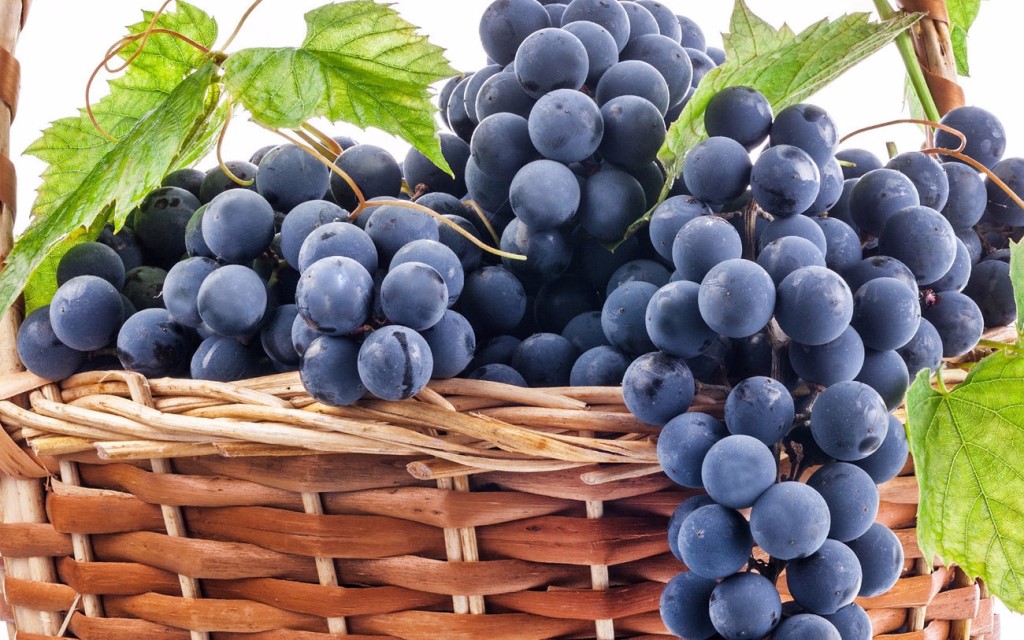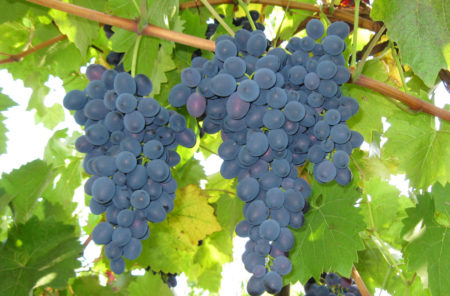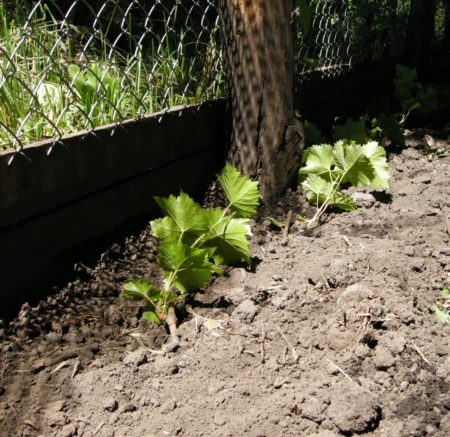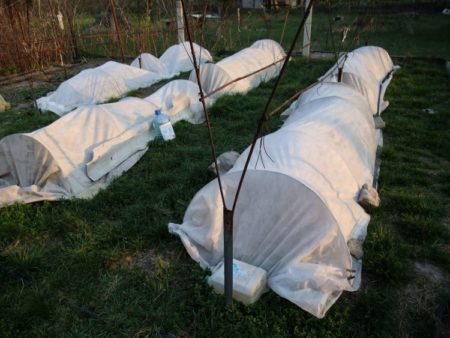
The famous grape varieties include Moldova. Even those who have never been engaged in cultivating the crop, surely tasted Moldova and remembered sugar and juicy berries. Buyers often see this variety on store shelves, as Moldova is grown on an industrial scale. The variety is unpretentious in the care and cultivation. You can get the maximum yield from it if you study the characteristics, description of the variety with reviews, tips from experienced growers.
Content
Characteristics and description of the variety

By name you can guess about the historical homeland of the grape variety, because it was bred in Moldova. Moldova is a representative of the selection of the 60-70s. To obtain grapes, foreign varieties of Save Sevillar and Guzal Kara were crossed. The berries are almost black in color with a purple tint. There is a wax coating on the skin. It protects the berry from damage, cracking. Inside the fruit contains a white-red pulp with 2-3 seeds. The pulp is sweet, but has a bit of acidity. The sugar content is 17-18%, the acidity is at the level of 7-10 g / l. All berries are collected in one brush, which weighs from 500 g to 1 kg. The berries themselves are not large, medium in size, each weighing no more than 6-7 g. The length of the grape is 2-3 cm.
Moldova is bred for various purposes, since the variety is universal. It is suitable for sale, for eating. Berries use for cooking compotes and jam. Thanks to their sweetness, they can be combined with citruses and fruits, the taste of the workpiece will be harmonious. Wine or spirits insist on grapes. Moldova is recognized as a high-yielding variety. Fruiting begins in the second year of planting, then increases every year. The peak crop occurs when the plant reaches the age of 8-10 years. From one bush it is really possible to collect up to 150 kg of berries. On an industrial scale, the yield indicator is 150-200 centners of berries per hectare. The ripening of berries takes 150-160 days from the moment of swelling of the kidneys, picking begins no earlier than mid-September.
Moldova grows to 6 meters in height. Like all grape varieties, she needs a garter to a trellis or other support. Active shoot formation, the bush needs to be shaped and cut off the extra eyes. Pruning directly affects crop yields: excessive loading of the bush or underloading leads to poor fruiting and reduced quality of berries. The variety is practically not sick. Diseases such as oidium, phylloxera, mildews are not afraid of him, since he has immunity to them. Moldova perceives a little worse chlorosis and phomopsis, there are cases of infection.
Moldova was originally zoned to the southern regions. It is ideal for a mild climate, its are grown in Sochi, Anapa, Crimea, Rostov-on-Don and in the Rostov region, Krasnodar Territory. Although the variety has good frost resistance up to -20 degrees, the variety is not suitable for planting in the north of the country.
The strong qualities of grapes include:
- ease of breeding and care;
- stable high productivity;
- good storage and transportability;
- palatability and commercial appearance;
- immunity to many diseases.
The grapes also have negative traits. Due to the late ripening, the berries often do not have enough time to fully ripen before the onset of frost. Therefore, for landing in the suburbs Moldova's taste may be a little sour.
Landing and care

Moldova is most often planted in the spring, autumn planting is not very suitable for the variety.If grapes have never been grown on a site before, then you can plant its seedlings. When buying grapes pay attention to the roots: they must be healthy and smooth, white. It is best to buy seedlings in early or mid-March, as the buds on the branches have not yet blossomed by this time. For the first planting, up to 10 seedlings will suffice, if there is a desire to propagate them, the shoots can be easily rooted, and the bush is cut.
Moldova loves the sun and warmth, therefore, the plot for grapes is placed in a place protected from the wind, but not shaded. With a lack of light, the berries will ripen even longer. If possible, the soil for the culture is prepared as early as autumn or early spring after the snow melts. Humus is added to the ground, about 1 kg leaves for 1 sq. M. Grapes respond well to organic compounds, so for fertility add a glass of oven ash per 1 sq.m.
Grape seedlings are planted from each other at some distance. Leave 2-3 places between plants, with age they will begin to cluster and will not interfere with each other. Immediately after planting, the seedlings are watered, and the soil is mulched with sawdust or straw. The vine branches are tied with a slight slope to the ground. Over time, when the branches grow, the garter needs to be made higher so that the vine stretches. Stepsons can not be removed from seedlings; starting from the second year of cultivation, weak shoots 15-20 centimeters long are shortened - they are simply broken off to the very root. From the shoots you can grow a stalk, which is well suited for planting next year.
In mid-April, prophylaxis against fungus and other grape diseases. Most often used are Azophos, colloidal sulfur, Bordeaux fluid, Quadris. Drugs are used in accordance with the instructions on the packaging. Usually, after the first treatment, the second follows after 5-7 days.
Shelter for the winter

Moldova ends fruiting late, not earlier than mid-October. When the last clusters are removed, cut off the remaining green foliage. Scheme pruning branches should include that part which did not ripen. There should remain about three prolific shoots left and right. Before winter, you need to water the grapes (2-3 buckets of warm water on the bush) and wait until the soil dries. Closer to November, the vine is removed from the trellis and carefully folded into a bunch. They add a bunch of earth with peat and cover it with burlap. You can put cellophane on top of the burlap - it will protect the plant from water. Such a shelter is enough for Moldova to survive even a long winter and a cold spring. Open grapes not earlier than April.
Reviews
Maxim from Crimea writes:
“Moldova is ideal for sea air and a mild climate. For 3 years, the grapes have already reached several meters in height and bear fruit abundantly. For the winter, I don’t cover it, light frosts about 0 degrees and a little lower it experiences perfectly. I water the crop once every 3-4 weeks; frequent watering to plants is not needed. The grown berries were happy to eat all fall, even cooked jam. ”
Vera from the suburbs says:
“For the suburbs, the variety fits well. At first I was afraid that the grapes would freeze, but nothing happened to him over the winter. She covered him with foliage and film, in the spring he cut the shoots, and in the summer he bloomed. I’m very happy with the variety, but what kind of berries grow - go crazy! Sweet, juicy, dark as in the south. In general, I definitely recommend Moldova for landing. ”




 Non-covering winter-hardy grape varieties for Moscow region
Non-covering winter-hardy grape varieties for Moscow region How to keep the vine in winter
How to keep the vine in winter When can I transfer grapes to another place in the fall
When can I transfer grapes to another place in the fall How to cover and prepare grapes for the winter in the suburbs
How to cover and prepare grapes for the winter in the suburbs